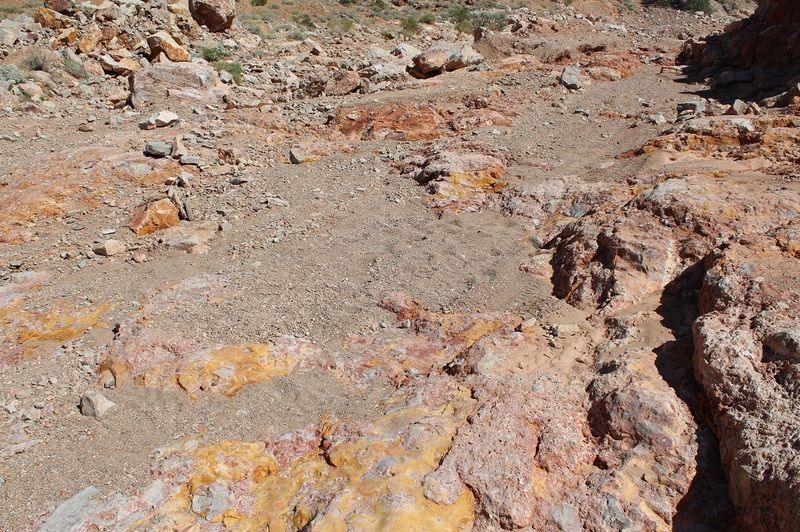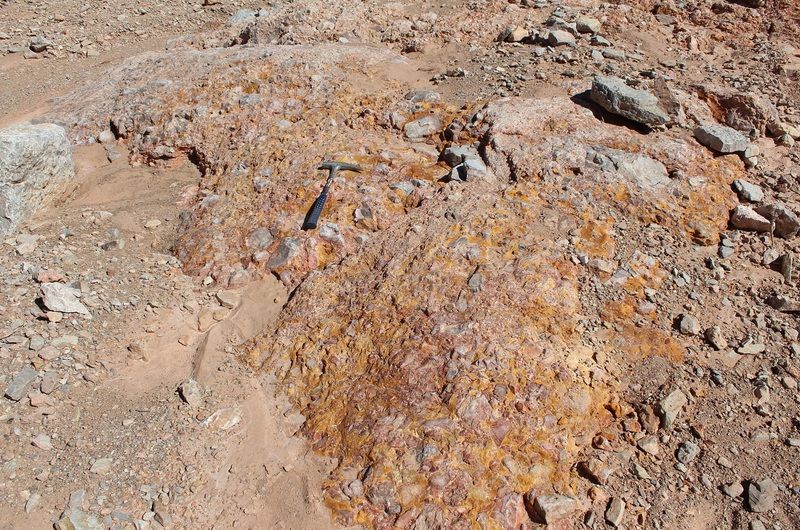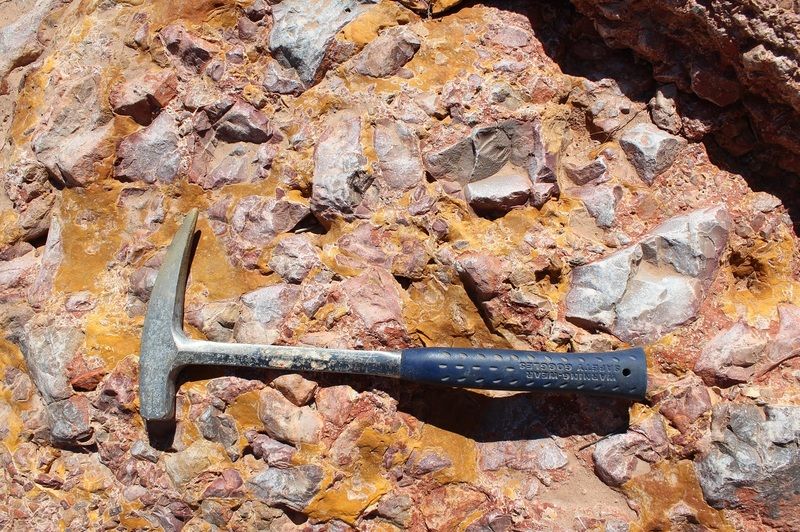A couple of summers ago there was a heavy rain event that caused flash flooding. It took out part of the road which goes to an area that I collect petrified wood. About 2 weeks after the flood event I drove up there to check it out. Where the road passes through a small canyon most of the soil/sand had been stripped away leaving bare the bedrock at the bottom of the wash. Much to my surprise the bottom of the wash consisted of a very strange and brightly colored conglomerate.
Here is where the road used to be...

This was the strange bedrock which was revealed at the bottom of the wash. Thats a long-handled 22oz rock hammer for size comparison.


I gathered up some nice boulders of this material which had broken free and were strewn about the wash to take home as yard decoration. They have sat in my yard ever since. I could tell there was not much lapidary use for them. The yellow part is very soft, almost chalky. And the other stones encased in the conglomerate are all over the map on hardness. Surprisingly though the material is very stable and does not break apart easily. It takes a serious blow with a large hammer to break it apart at all. And some of the seams where the rocks are 'glued' together look almost agatized.
Anyway, I'm posting about this today because I finally threw a chunk of it in my saw this afternoon while I was tinkering about just to see what I got. Heres a couple pieces I cut off. These are about 4.5" X 6" and I cut them about an inch thick. I think they will make cool display specimens if nothing else. I might make a clock out of one just for kicks.
